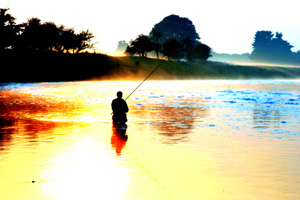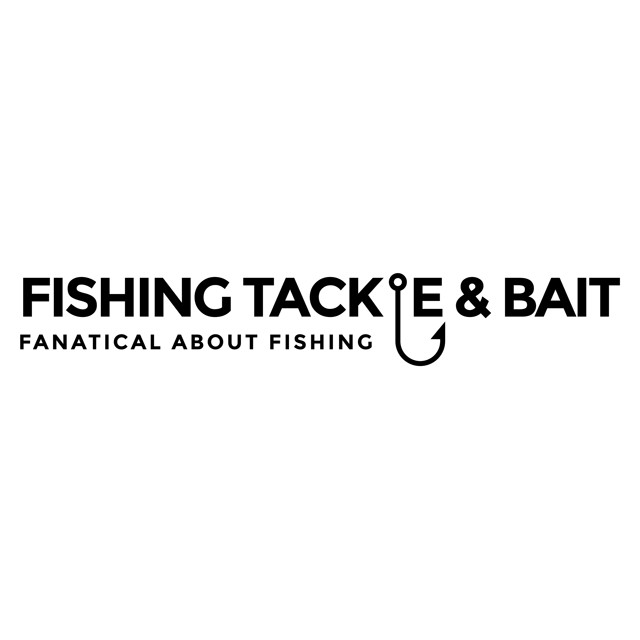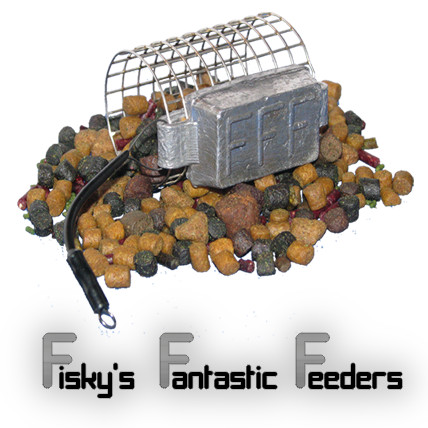
Since appearing on Sky TV’s Tight Lines programme with Keith Arthur a few weeks ago I’ve received a huge number of enquiries asking me to explain in detail my barbel rigs and bait presentations. It certainly appears the programme made a lot of barbel anglers sit up and think.
Recently on Sky’s Tight Lines angling programme I ran through a rig that has produced some fantastic catches for me this summer. The rig is one that I use mainly on the Trent although I’ve used it on the Wye and the Dove and I would probably make it my starting point on the Severn or the Ribble. In other words, I would use it on any medium sized river upwards.
In saying that, I’ve used it on much smaller rivers, too, and it has proved equally effective. It’s just a question of whether you actually feel you need to use a feeder on the smaller rivers. What I will say is that my small river rigs are identical to this in regard to everything below the swivel on the end of my main line so it really doesn’t matter where you fish, this rig could be relevant to you.

Let me set the scene first. Take the Tidal Trent as a really good example. Here you will be fishing blind. The river is wide, the flow is strong and you cannot see the bottom. It’s not a case of locating fish and then drawing them away from their haven by creating a feeding area, thus allowing you an opportunity to pick them off one at a time. On the tidal I’ll be creating a feeding area that I will hope to first attract nomadic fish and then hold them in the swim.
As a consequence it must be clearly understood that a rig in isolation is not the answer to everything, you must first get your feeding right and that may well be an article in its own right. Indeed, make that a date. I’ll cover feeding in next month’s magazine.

But let’s look at my tackle. I invariably fish with two rods on the tidal Trent. In past seasons I’ve veered towards a feeder on the upstream rod and a straight lead, for searching the swim, on the downstream rod. This year I’ve used two feeders because of the need to get more bait into the swim and that’s as well as using a bait dropper in between times. I am using a lot of bait because the fish keep telling me they want it. It seems the more I put in the more they seem to want and in four short trips in daytime hours, normally 10am to 5pm I’ve had 46 barbel and for quite a bit of that time I’ve been fishing with only one rod.
You see, when the fish are having it, two rods can become a liability, rather than an advantage.

The feeders I’m using are the ones made by Paul Fisk, known to the barbelling world as Fisky’s Fantastic Feeders. The poor bloke will be tearing his hair out now I’ve mentioned his name again because he makes these feeders as a hobby. Normally he shifts his entire output at the various regional Barbel Society meetings and the last thing he needs is to go nationwide but the plain fact is, most commercially manufactured feeders are too light and they’re unable to stand up to the rigours of the River Trent. Once you add four, five or even six ounces of lead they give up the ghost and disintegrate. These don’t. End of!

Now you need a substantial rod to cast a loaded 3oz feeder, never mind a 5oz jobbie. This is why many anglers turn to carp rods but I am more than happy to use my Daiwa Infinity Barbel Specialist rods. Let’s face it, they were made to my own specifications and I personally took two of Daiwa’s top Japanese rod designers onto the Trent, in a flood, to show them exactly what I needed and why. It was only when I hooked a typical steam train that they fully understood and the, “Owoaagh, I see…” followed by gently nodding heads told me they had grasped the nettle and the result is the rod I use today.
It is matched with a 3500 sized reel. This has varied through the years from the SS3000s, the Advantages, Caldias and today it’s the Exceler. Basically, whatever has been in the current catalogue if I’m being honest. I trust Daiwa reels implicitly. They’ve never let me down, the drag systems are robust and reliable, and that’s all that matters to me. I tend to stick with 10lb Sensor line, mainly because it’s cheap, cheerful and robust whereas some prefer 12 or even 15lb line. If you do, then the 4000 sized reels are probably better but if I’m being honest, I’ve never actually needed much more than 50 yards of line on my reels for barbel fishing even on a long cast. The other 200 yards is backing that never sees the light of day, isn’t it?
What I wouldn’t recommend is any kind of baitrunner/ freespool kind of reel. It’s each to his or her own, of course, but this kind of reel is ideal for the angler who cannot concentrate on a rod, likes to fall asleep, or maybe wanders off to have a chat and share a few lagers with his mates. Seriously, the front drag of your reel is your baitrunner when you’re barbel fishing. You set it so the rod creates a bolt effect but will grudgingly give line when asked and Bob’s your uncle.

I appreciate that some anglers prefer a bolt rig, based on those used by carp anglers, for barbel fishing. I am not a fan of these for one very good reason. A ‘fixed’ weight is more likely to loosen a hook-hold in my view than a weight which can move up the line when a fish charges around, changing direction and diving into banks of ranunculus weed.
Over the years I’ve tried many variations and it’s fair to say I abandoned the swivel over a tail rubber idea long before it ever appeared in print because the rubbers split far too easily. The simple but effective twin large rubber beads worked quite well but you did suffer an occasional unexpected breakage caused when a wrapped-over hook link sheared the main line.

What has to be borne in mind is that a heavy swimfeeder exerts an awful lot of pressure on something like a third of a millimetre of line against which it sits, especially during casting and at the moment when the feeder pings clear of the water as you bring a fish to the net. Add in the times when a feeder gets caught on weed or behind a rock and it is clear this is a weak point in any set-up.
The logical solution is to transfer this pressure directly to the hook link swivel using a plastic lead clip however the key is to find the right lead clip – one which doesn’t trap the swivel, thereby retaining the running rig concept.

By far and away the most effective clips I’ve used to date are the ones made by Korum in the ‘standard’ size. These clips are intended for use with a peg which fixes the swivel into the clip so the lead can be ejected. DO NOT, under any circumstance, use the pegs when feeder fishing for barbel. Just allow the clip to run freely on the main line and make sure the feeder is secured firmly with the robust tail piece, otherwise you might lose your feeder and that’s neither good for the environment nor your pocket!
I always use a Palomar knot to secure this swivel to the main line and test it carefully. It is the key knot in my whole set-up as it is constantly under pressure through casting out and reeling in.
Now we move onto the hook link itself. Fluorocarbon lines were heralded as a massive breakthrough in fly fishing and then general coarse fishing because the refractive index is close to that of water making it practically invisible. It is dense and therefore sinks which keeps it close to the bottom but it is quite stiff. Time and time again while filming barbel behaviour Stu and I have seen barbel spook when they come into contact with fluorocarbon. If it was a one-off I’d dismiss it, but it isn’t. To make matters worse, when one barbel spooks off the rest tend to follow.
I could understand the fixation with fluorocarbon if barbel showed any fear of thick nylon or braids but quite frankly they do not. We have filmed barbel with strands of weed draped over their snouts and we’ve filmed them with soft braid draped over them, too. They simply don’t appear to care.

For this reason we have gravitated towards sinking braids as our first choice of hook link. In open water I use 10lb BS Drennan Sink Link. In weedy swims I’d happily use Kryston Merlin in 10lb BS. Other manufacturers produce similar products, the choice is entirely yours. What is important to me is the length of the hook link. I prefer it to be around 3 feet long. Why? Well, the answer is twofold. A long, supple hook link keeps a feeding fish well away from the point where my main line rises from the bottom. Secondly Stu and I have filmed fish ejecting baits presented on short hook links time and time again and our conclusion is that the tautness of a short hook link prevents the fish from properly mouthing the bait. A longer hook link facilitates this because there is always a degree of slackness between hook and feeder.

At the feeder end of the hook link I aim to create a boom which will hold the braid away from the feeder itself, thus reducing tangles and at the same time eliminating abrasion of the braid by rubbing against the feeder. Stu uses a simple length of silicone tubing. I prefer the tapered Korum Rig Sleeves. It’s personal choice.
We now come to the key elements which is the hooking arrangement. For years I put my faith in the knotless knot with nothing more besides. It seemed right to me and it was so simple to put all those savage raps on the rod tip which produced nothing as ‘nuisance’ chub. This season I’ve changed my presentation, I’m consistently catching more fish than ever before and the number of unproductive ‘raps’ has diminished dramatically. Perhaps it is coincidence, perhaps not.

I still use the knotless knot to attach my hook and create a hair but over this I simply slide a Korum Anti Eject Sleeve. It’s the small size you need. The result is in effect a bent hook rig and it is highly efficient when it comes to connecting with pick-ups.
Which leads on to the hooks I’m using. My choice is the Gamakatsu GP202 Wide Gape Specialist Hook in a size 8.

The beauty of this pattern is that it has a slightly in-turned point which is ideal when fishing over rocky, stony or gravel ground. What is most important though is you check the point before every single cast because you cannot afford for a point to be blunted or turned over. Ever!
The same pattern is available in barbless if you prefer, the code being GP203.
And that brings me on to the subject of hairs, baits and bait mounting. An opportune time, I guess, to break off and leave you waiting for Part Two when I’ll reveal all…

If you found this article useful then don’t miss Part Two.












Leave a Reply